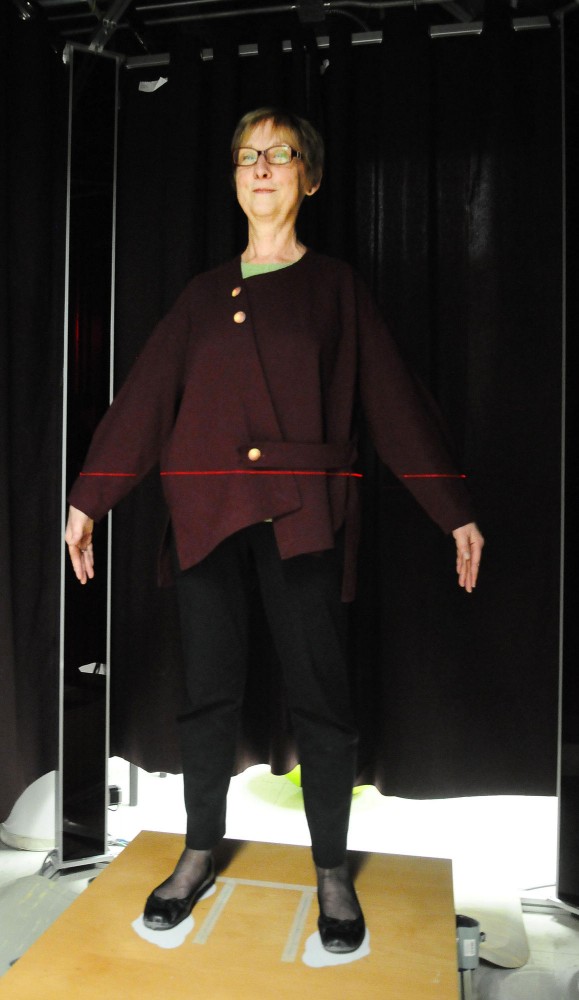A 17-year breast cancer survivor and professor in the University of Minnesota College of Design is striving to find ways to make the lives of fellow survivorsâÄô less painful by using 3-D imaging technology.
Karen LaBat and a team of researchers from the school are using 3-D body scans in the Human Dimensioning Lab to aid breast cancer survivors with body asymmetries, or figure disproportionalities, brought on by surgery and radiation therapy. These often cause the survivors pain and discomfort.
Last fall, the group reached out to several breast cancer support groups in hopes of finding volunteers for the study, said Karen Ryan, a fellow researcher on the project.
Twenty-five breast cancer survivors volunteered to travel to the Twin Cities campus for the 3-D full-body scans and interviews about their apparel concerns and discomforts, Ryan said.
She said some volunteers come from hundreds of miles away to help in the research. They bared nearly everything for the cause, allowing the group to scan them in little more than their underwear.
The project is funded by a grant from the Minnesota Agricultural Experiment Station, which provides money for a number of research projects in the Human Dimensioning Lab.
LaBat said the idea for the project came from her personal experience with breast cancer and through experiences she read about other survivors.
Part of their project focuses on developing apparel needs for survivors based on the asymmetries, primarily in the arms, she said.
One common irregularity in survivors is lymphedema, or swelling of the arms or legs caused by lymph node removal during cancer treatments.
Ryan said survivors experience a feeling of heaviness from the swelling and it is important to control it because it can make them more prone to infection.
In an attempt to control the swelling (there is no cure), some survivors use lymphedema âÄúsleeves,âÄù or compression garments, LaBat said. But the sleeves can be difficult to get on, are usually unattractive and can be uncomfortable.
Sherry Sanden Will, undergraduate research assistant and apparel design student, said women who have overcome cancer often complained about bra discomfort and the compression garments irritating their skin which is already sensitive due to radiation therapy.
The scans will hopefully shed light on ways to design apparel such as bras and shirts, as well as compression sleeves.
Using the scans, the team will evaluate the effectiveness of current sleeve designs and help shape future ones, Labat added.
The scans were completed last spring, and now the group is focusing on data analysis.
Chad Sowers, a graduate research assistant, is working to gather information from each set of arms.
They are trying to compare the volume of one arm to the other. To do that they take a paper-thin extract of the arm scan and match it to the same spot on the other arm, he said. They are still trying new techniques to make this more accurate.
Once the results are published, they will be open for use by students at the University, as well as designers, medical researchers and doctors.
In the future, Ryan said they hope the technique becomes exact enough so it may be used for diagnosis and rehabilitation.
Ryan said the scans and analysis technique could document body changes with other treatments like weight training.
She said the scan will hopefully be a scientific, documented way to prove what works and what doesnâÄôt so survivors can live without discomfort.











